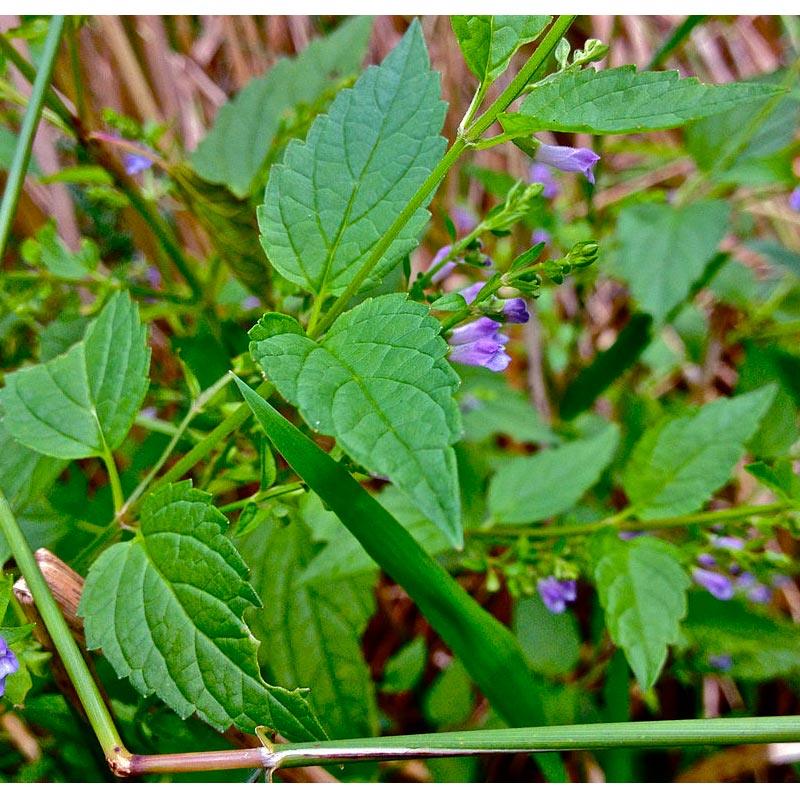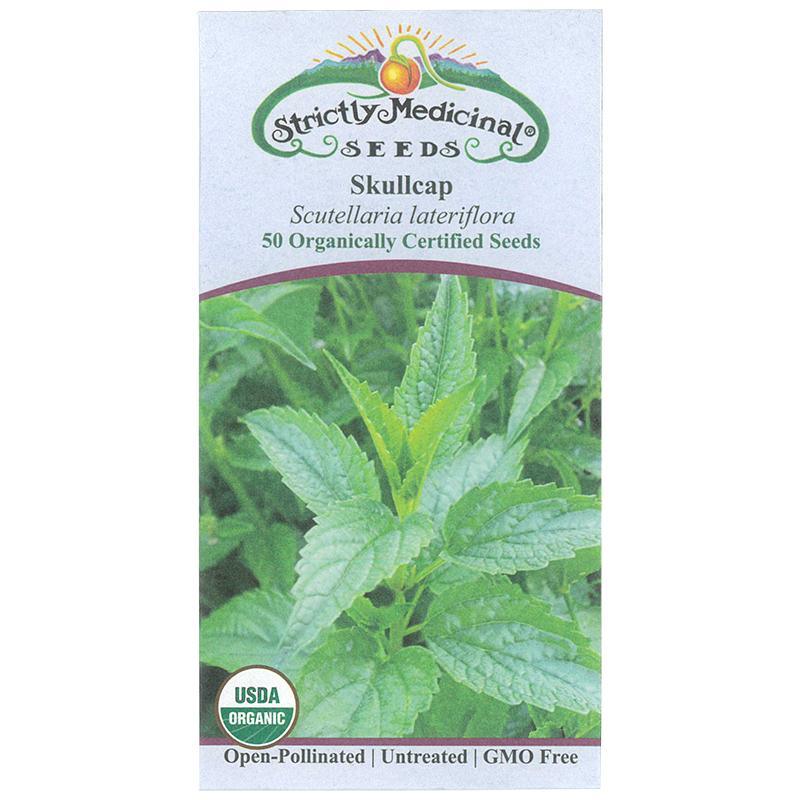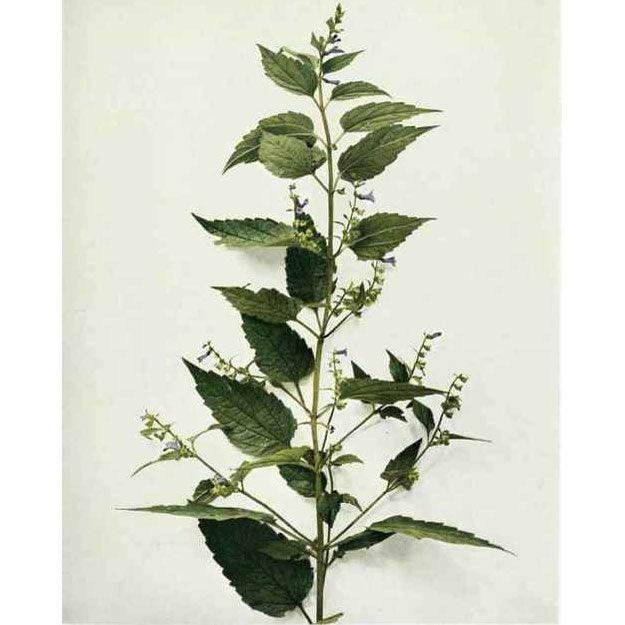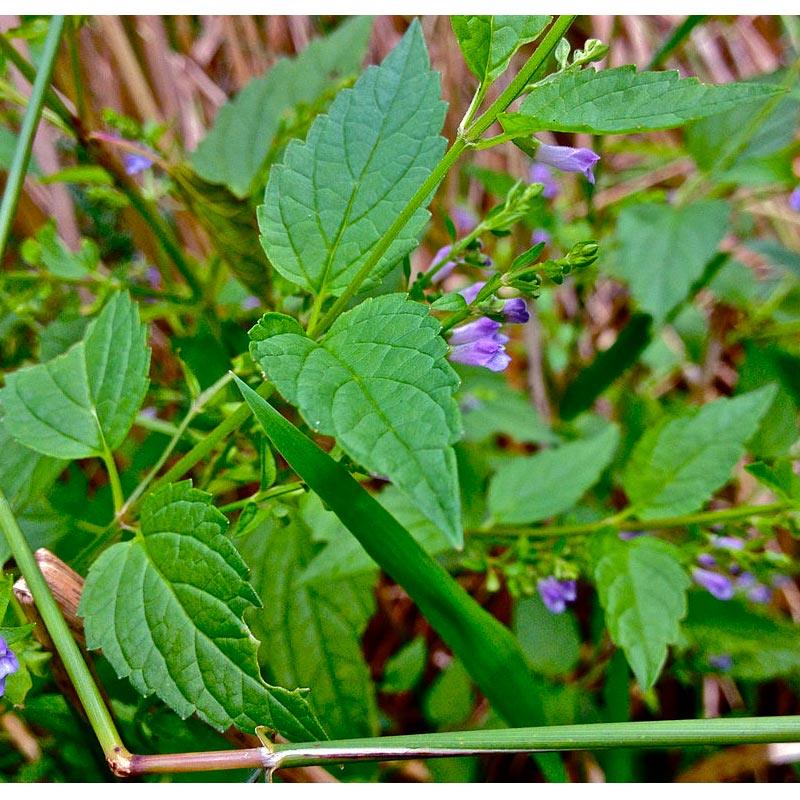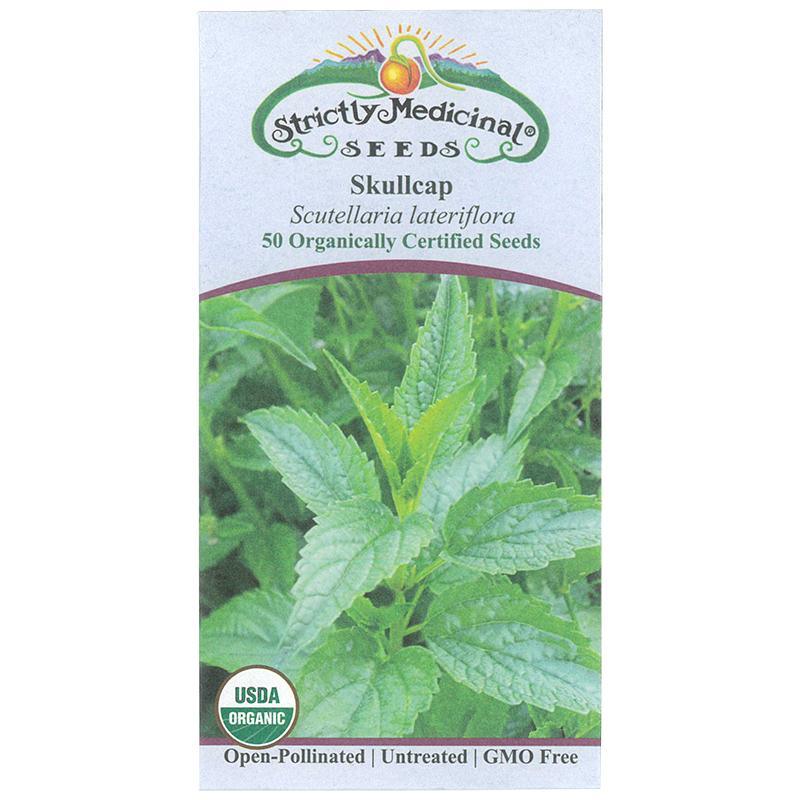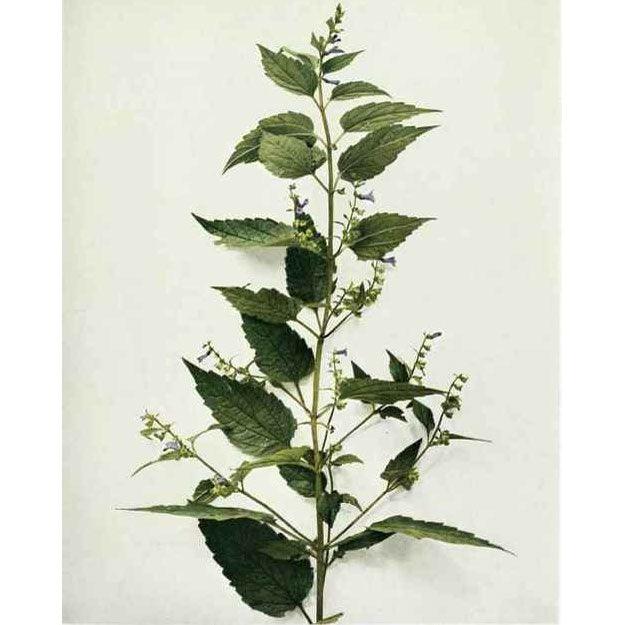Item Number: SNV7036
Skullcap Seeds (Organic)
Calm with a Skullcap Tea or Tincture
Skullcap - Scutellaria lateriflora
Short-lived creeping herbaceous perennial hardy to -15 degrees F. Flowers blue to 2 feet tall.
Organically grown. 100 seeds/pkt.
Growing skullcap, including varieties like American Skullcap (Scutellaria lateriflora) and Chinese Skullcap (Scutellaria baicalensis), offers a unique insight into the world of herbal cultivation. These herbs, with their rich history in traditional practices and interest in scientific research, are intriguing for both gardeners and herbal enthusiasts.
Introduction to Skullcap
- American Skullcap (Scutellaria lateriflora)**: This herb is native to North America, thriving in moist, rich soils and partially shaded areas. It has been a subject of interest in various phytochemical and biological studies.
- Chinese Skullcap (Scutellaria baicalensis)**, known as Huang Qin in Traditional Chinese Medicine (TCM), is distinguished by its use of roots. The roots of Scutellaria baicalensis have been historically significant in TCM.
Cultivation Tips
The American Skullcap prefers environments that mimic its native woodland habitat, requiring moist and nutrient-rich soil. Conversely, the Chinese Skullcap is more adaptable to sunnier and drier conditions, though it also requires well-drained soil for optimal growth.
Phytochemical and Biological Analysis
Studies have focused on the phytochemical profiles of these plants, exploring their various natural compounds. Research in this area continues to uncover new information about these herbs, contributing to a broader understanding of their properties.
Traditional Use and Research
Both variants of skullcap have a longstanding history in herbal practices. The American Skullcap has been noted for its use in traditional herbal applications, while Huang Qin has been a component in TCM for various applications.
Contemporary research has begun to explore these traditional uses, delving into the various aspects of skullcap. This research is often grounded in historical practices, providing a modern perspective on these ancient herbs.
General Considerations
While skullcap varieties are of interest for their historical and cultural significance, it's important to approach their use with a general understanding of herbal practices. Awareness of potential interactions with other plants or substances is part of responsible herbal use.
Growing and Using Skullcap
For those interested in growing skullcap, whether for personal use, study, or contribution to herbal medicine, it’s important to understand the plant’s needs and rich history. A member of the mint family, skullcap—particularly Scutellaria lateriflora L.—has long been valued for its calming and anti-inflammatory properties. Both American and Chinese skullcap varieties offer unique opportunities for cultivation and research.
Starting with high-quality skullcap seeds, gardeners can grow organic skullcap at home and explore its role in traditional remedies. Studies such as the Phytochemical and biological analysis of skullcap Scutellaria lateriflora L., a medicinal plant with anxiolytic properties highlight its potential in reducing oxidative stress and supporting various health conditions. Researchers like Awad R, Arnason JT, and others have contributed to our understanding of its active compounds.
As with any herb used in herbal medicine, it's vital to consider side effects, appropriate use, and consult safety information from trusted sources. Growing skullcap can be both a therapeutic and educational experience, offering insight into the historical and scientific significance of this fascinating medicinal herb.
Photo by Fritzflohrreynolds




Check Your Zone Compatibility:
Compatible with your zone.
Growing Zone for

Our Guarantee To You
Since 1976, we've served our customers at every stage of growing. Please contact us at any time. We are happy to support and assist you.
Shipping Information
Shipping Information
Shipping Weight: 0.01 lb
Dimensions: 5.0"L x 2.625"W x 0.1"H
Features
Features
- Attracts Bees/Butterflies
- Cold Hardy
- Does Not Require Support
- Down to 25°F
- Good for Drying
- Open-Pollinated
- Requires Summer Water
- Shade Tolerant
- Tolerates Poor Drainage
- Useful for Ornamental
Characteristics
Characteristics
Planting & Care
Planting & Care
Soil & Water: Plant prefers fertile, moist soil, part shade to full sun. Sow in garden in cool soils of fall or early spring, or give 30 days cold conditioning by mixing with moist medium in a plastic bag in the refrigerator, ten sow in warm soils.
Planting & Growing: Sow in garden in cool soils of fall or early spring, or give 30 days cold conditioning by mixing with moist medium in a plastic bag in the refrigerator, ten sow in warm soils. Germination takes up to 30 days. Thin to 6 inches apart.
Harvesting & Storage: Harvest flowers and leaves in mid-August into September or when blooms are about to open. Use fresh or dry if sufficient quantity available.
Useful Information
Useful Information
Guarantee
Guarantee
Share
